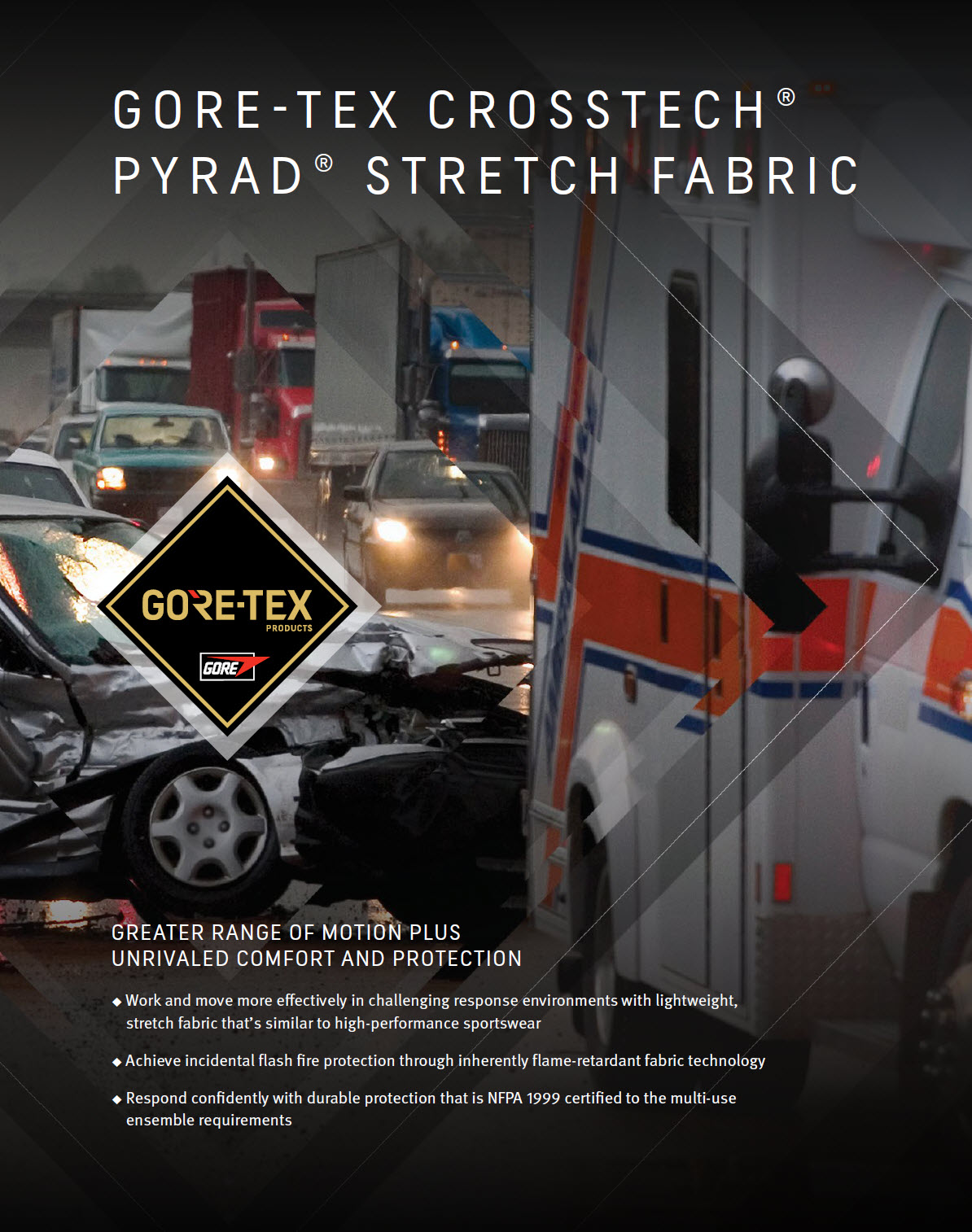Newark, Del./U.S.A. (July 21, 2025) — W. L. Gore & Associates (Gore) announced the expansion of its GORE-TEX CROSSTECH® Product portfolio with the launch of three advanced moisture barriers—GORE-TEX CROSSTECH® Endure Moisture Barrier, GORE-TEX CROSSTECH® Prime Moisture Barrier, and GORE-TEX CROSSTECH® Innovate Moisture Barrier—unveiled at the FDIC trade show in April.
"These new technology platforms are helping to shape the future of firefighter performance," said Jennifer Wise, product specialist at Gore. "Departments face unique challenges, and we’re leveraging Gore’s knowledge of high-performance fabrics to create solutions that are evolving with their needs."
These advancements in mission-critical fabrics build on the trusted legacy of GORE-TEX CROSSTECH® Products to further enhance garment performance by delivering exceptional options for protection and breathability.
“These new technology platforms are helping to shape the future of firefighter performance.”
Introducing the New Product Lineup:
- GORE-TEX CROSSTECH® Endure Moisture Barrier: With an unmatched combination of durability and breathability, this barrier helps manage heat stress in a broad range of conditions. Testing showed the barrier, and its seams remained liquid penetration resistant after 25 wash/dry cycles and five convective heat exposures – 2 ½ times greater than what the standard requires.
- GORE-TEX CROSSTECH® Prime Moisture Barrier: With excellent breathability, this moisture barrier helps manage rising body core temperatures that could lead to hearing loss, exhaustion, and decrease in mental accuracy. Elevate your confidence knowing its component recognized to the NFPA 1970 (71) standard and compliant with EN 469.
- GORE-TEX CROSSTECH® Innovate Moisture Barrier: Developed for fire departments seeking to align with the optional requirement of the NFPA 1970 (71) standard, GORE-TEX CROSSTECH® Innovate Moisture Barrier upon certification had a PFAS (total fluorine) concentration of no more than 100 PPM. This unique barrier has been made to provide reliable penetration resistance against blood, body fluids, NFPA common chemicals, and water.
GORE-TEX CROSSTECH® Moisture Barriers are components recognized to the NFPA 1970 (71) standard, allowing garment manufacturers to pursue garment certification. End users are encouraged to consult with the garment manufacturers directly regarding certification timelines and product availability.
These additions enhance the GORE-TEX CROSSTECH® Product portfolio which also include:
- GORE-TEX CROSSTECH® PARALLON® Liner System: a highly breathable system that maintains thermal protection better when gear gets wet, particularly from sweat
- GORE-TEX CROSSTECH® Black Moisture Barrier: the choice of most U.S. major metro departments for its proven durability and consistent breathability.
A Legacy of Innovation
For decades, Gore’s products have been trusted by frontline professionals—from firefighters and law enforcement to industrial safety and military personnel—who depend on science-backed innovations to perform at their best.
Gore has pioneered the development of high-performance fabrics that solve real and often complex challenges. The latest GORE-TEX CROSSTECH® moisture barriers reflect the company’s ongoing commitment to advancing the science of personal protective equipment. For more information visit GORE-TEX CROSSTECH® Garments for Firefighters on the GORE-TEX Professional website.
About Gore
W. L. Gore & Associates is a global materials science company dedicated to transforming industries and improving lives. Since 1958, Gore has solved complex technical challenges in demanding environments — from outer space to the world’s highest peaks to the inner workings of the human body. With approximately 13,000 Associates and a strong, team-oriented culture, Gore generates annual revenues of $5 billion. gore.com
# # #
Media Contact
Courtney Gearhart
W. L. Gore & Associates
+1 410 506 2790
cgearhar@wlgore.com

















